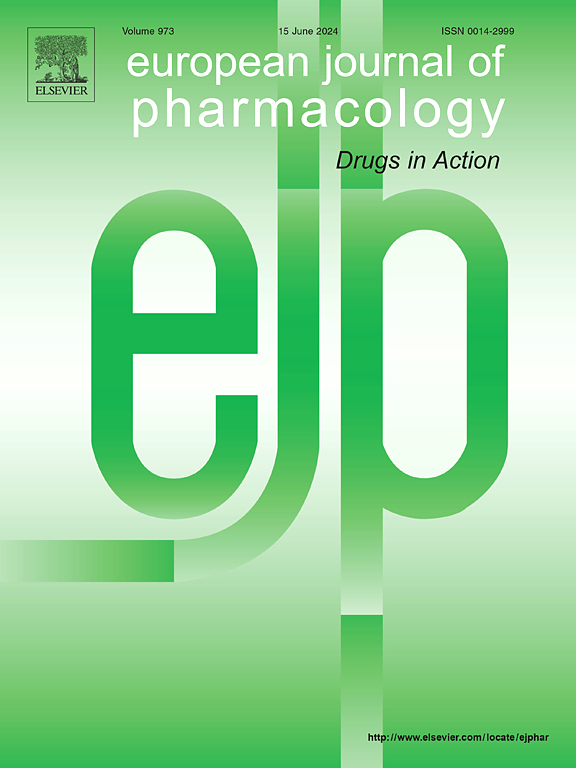Oligo-peptide I-C-F-6 mitigates polymicrobial sepsis-induced cardiac dysfunction in mice
IF 4.2
3区 医学
Q1 PHARMACOLOGY & PHARMACY
引用次数: 0
Abstract
Cardiomyopathy accounts for worse clinical outcome and higher mortality rate during sepsis globally. Here we assessed whether post-operative administration of I-C-F-6, a small molecule oligo-peptide (Gly-Ala-Gly-Pro-His-Gly-Gly) derived from Carapax trionycis, protected against septic cardiomyopathy in mice. Male adult mice were exposed to cecal ligation and puncture (CLP) and I-C-F-6 was administered intravenously (0.4 mg/kg or 4.0 mg/kg) 30 min following surgery. Administration of I-C-F-6 extended survival period and decreased sepsis severity score in septic mice. Furthermore, administration of I-C-F-6 mitigated cardiac atrophy and preserved cardiac function in septic mice. Mechanistically, I-C-F-6 inhibited inflammation and promoted M2 polarization in myocardium of septic mice. In addition, I-C-F-6 activated nuclear factor erythroid 2-related factor 2 (Nrf2)/haem oxygenase-1 (HO-1)/glutathione peroxidase 4 (GPX4) pathway, mitigated oxidative damage and inhibited ferroptosis in myocardium of septic mice. In conclusion, post-operative administration of I-C-F-6 in mice exposed to CLP improved survival and mitigated myocardial impairment. Our work established a clear therapeutic potential of I-C-F-6 for sepsis-induced cardiomyopathy.

求助全文
约1分钟内获得全文
求助全文
来源期刊
CiteScore
9.00
自引率
0.00%
发文量
572
审稿时长
34 days
期刊介绍:
The European Journal of Pharmacology publishes research papers covering all aspects of experimental pharmacology with focus on the mechanism of action of structurally identified compounds affecting biological systems.
The scope includes:
Behavioural pharmacology
Neuropharmacology and analgesia
Cardiovascular pharmacology
Pulmonary, gastrointestinal and urogenital pharmacology
Endocrine pharmacology
Immunopharmacology and inflammation
Molecular and cellular pharmacology
Regenerative pharmacology
Biologicals and biotherapeutics
Translational pharmacology
Nutriceutical pharmacology.

 求助内容:
求助内容: 应助结果提醒方式:
应助结果提醒方式:


